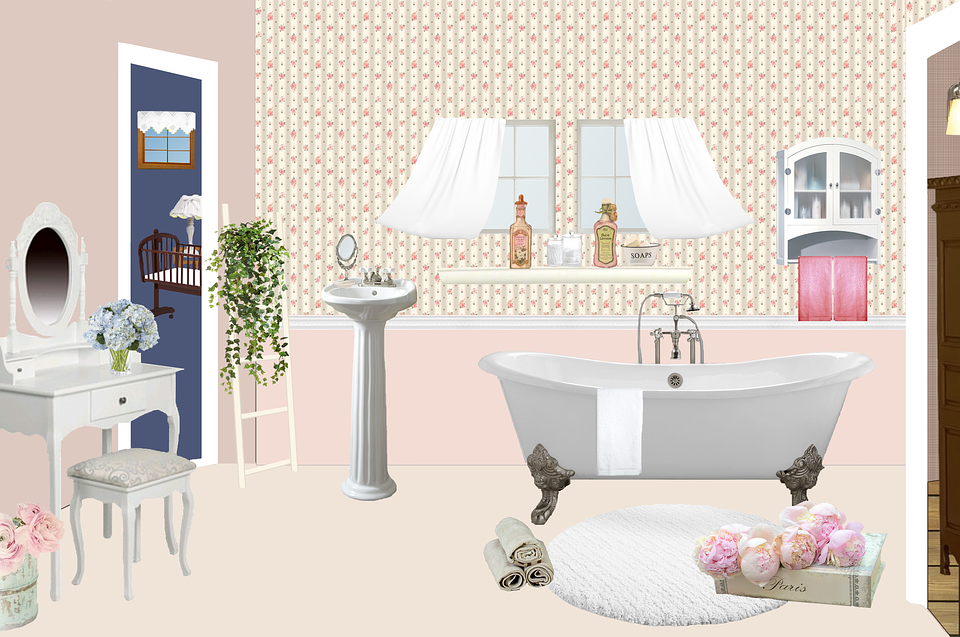
Did you know that the amount of water spent in bathrooms accounts for more than a quarter of water consumption in an average household? Water is a precious resource and it would be a shame to use it irresponsibly. If you have decided for a bathroom renovation, this is just one of the issues you need to address. There are still the questions of getting the job done with a minimal impact on the planet and choosing the most environmentally friendly materials for your bathroom. So, if you are interested in making your bathroom remodeling as green as possible, here are some tips which will help you accomplish that.
Reconsider how you use water
Water usage is the biggest issue in the bathroom, so it is the first thing you should think about when renovating. If you still own an old toilet installed before the 1990s, you should probably say your last goodbye since that unit alone uses two to seven gallons of water per flush. On the other hand, low flush toilets use no more than 1.6 gallons per flush. If you are worried about the flushing capacity, you can opt for a dual-flush toilet, which allows you to choose between two flush capacities – one for light and one for heavy work. Showers are also true water-vampires which use more than two gallons of water per minute. You can change that by installing a low-flow shower head which can conserve a lot of water.
Opt for an energy-saving water heater
If your old water heater is older than ten years, it is about time to change it for Energy Star rated unit. A tankless water heater is also a good idea since it heats water only when it is needed. Besides, the very unit is pretty affordable, and it can save you up to $70 a year.
Ensure proper ventilation
Have you had mold and mildew problems in your bathroom prior to renovation? Now is the perfect time to solve that problem by investing in an energy-efficient exhaust fan, which will not only keep your bathroom dry and healthy, but it will also eliminate odors. For additional savings, opt for a fan which has a timer installed so that you never forget to turn it off.
Choose green materials
Using green materials which don’t emit toxins is a great choice because it means that you are on top of your family’s health and that you don’t want to harm our planet. For bathrooms, you can choose glass tiles which are made of recycled materials. Refinishing your old tub and sink will save you money and contribute to this important cause. As for the bathroom vanities, you have a very wide choice, ranging from reclaimed wood to stone tops.
Introduce energy-efficient lighting
If you’re still using your old incandescent light bulbs, it is about time to change them for LED lights or CFLs (compact fluorescent light bulbs). Initially, they are a bigger investment, but they will pay off as you will save some money on your bills and you won’t have to change the bulbs so often.
Improve the heating system
Bathroom space heaters can use much more energy than you expect, especially if you combine more of them. To make the biggest savings, invest where it matters: in an energy-efficient floor heating system plus several useful heating accessories, such as heated towel rails. If floor heating will be your only source of warmth, make sure you decide for slab heating because, besides warming up the floor, this way of heating radiates warmth throughout the room.
Minimize the renovation waste
Finally, you have to think about construction debris your renovation will leave behind. This can lead to groundwater pollution, odor and ugly sights on the local landfill. Shipping that waste elsewhere only transfers your problem to someone else. Some things you thought about throwing away can be given to charity (tubs, sinks, etc.), as for the others, you should do your best to use materials which are degradable or recyclable.
Bathroom renovation is an expensive, time-consuming and often nerve-wracking process. Do your best to make that effort worthwhile, so that you can save money in the future, protect your family from toxins and preserve Mother Earth’s valuable resources. This way, your investment will truly be fruitful for years to come.
Written by Carolin Petterson
Author bio
 Carolin Petterson is a Business Lady and contributor for number of high-class websites. She loves to share her experiences and talk about practical solutions, but her specialties are sustainability, sustainable business and green living.
Carolin Petterson is a Business Lady and contributor for number of high-class websites. She loves to share her experiences and talk about practical solutions, but her specialties are sustainability, sustainable business and green living.
You may also like
Top 20 Things You Can Reuse and Recycle
The Ultimate Houseplant Cheat Sheet
How to Free Your Kitchen of Plastic
A Green Routine: Saving the Planet One Day at a Time
